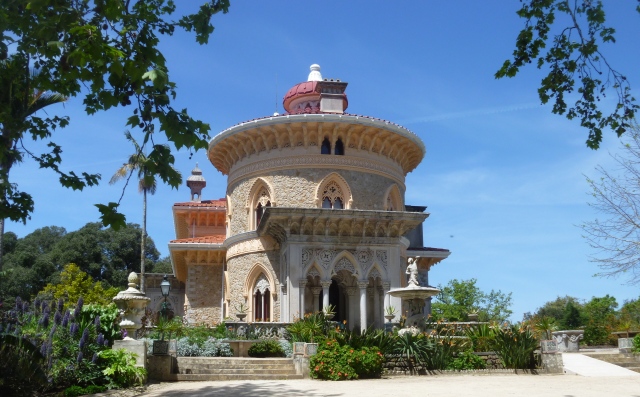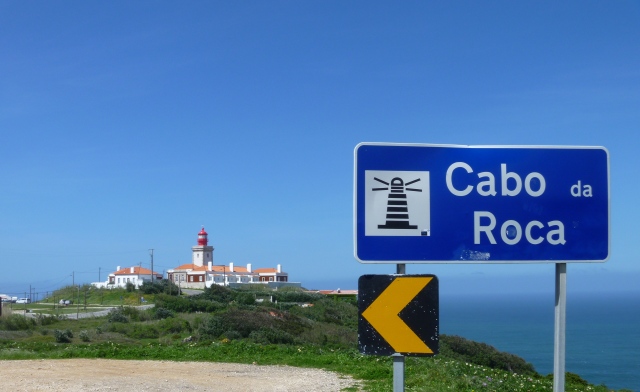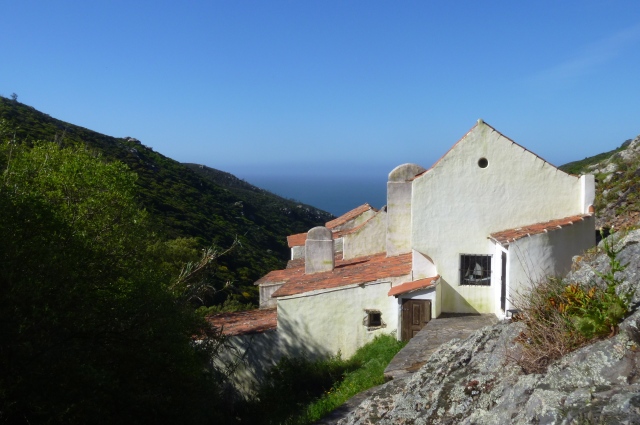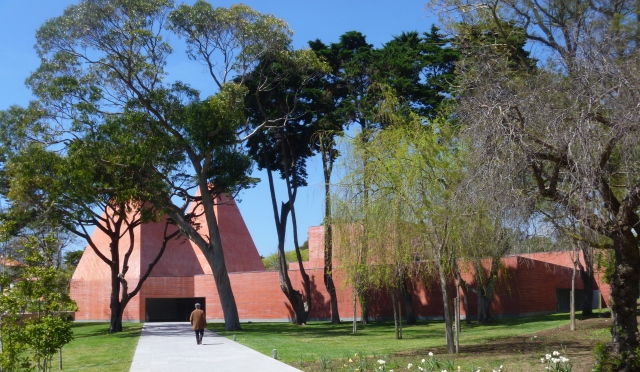The ATG holiday finished after breakfast on Saturday morning. We’d eaten early and walked down to Sintra Station for the 40 minute train journey to Lisbon Rossio Station. We passed the National Palace on our way. It’s on my list for my next visit!
The National Palace, Sintra
We’d added an extra night to the trip so that we might gain a flavour of Portugal’s capital city. From Rossio Square it was a 20 minute walk to our B&B in the shadow of the Sé Cathedral in the medieval Alfama district. Our hostess Teresa met us and let us leave our bags giving us a local map and a few suggestions for a day’s walking in Lisbon.
The hill and step climbing didn’t stop at the end of the walking holiday. Lisbon is a hilly city. First off we walked along the route of the famous old 28 tram up to the viewpoints at Santa Luzia and Portas do Sol Squares. Fantastic views over Lisbon and its port, Alfama and the River Tagus.
Alfama District from Santa Luzia Square
Tiled wall at Santa Luzia Square
Tram 28 at the busy Portas do Sol
Portas do Sol Square
Further climbing brought us to the end of the queue for the ticket office for the Castelo Sao Jorge. Once inside the Castle grounds you can take in fantastic city views from the busy esplanade, visit the archaeological museum, walk the battlements and see the ongoing Moorish excavations and shady gardens. Considered to be the site of the founding settlement of Lisbon recent archaeological finds date back to the late 6th C BC. The castle remains themselves are from the Moorish era (11th and 12th C). St George’s Castle was a royal residence until 1511. For centuries then it was neglected but today it’s an attractive place to visit and we spent the best part of the morning until the early afternoon exploring and admiring the views at every turn.
Lisbon, River Tagus and 25 April Bridge from the Castle Esplanade
Shady Esplanade at S Jorge Castle
Tile Frame Border in the Archeaological Museum
This is a representation of angels. Blue and white tiles with manganese. Produced domestically. Late 17th C. [Exhibit notes]
Moorish Excavations
Next up was a wander around Alfama – taking note of possible evening meal locations – and ending up at the popular, Bohemian-style Pois Cafe very near Sé Cathedral the next place on our itinerary.
Street in Alfama
Quiet Square in Alfama
Lisbon’s Cathedral, built not long after Dom Afonso Henriques took Lisbon from the Moors in 1147, stands on the site of city’s main mosque. The crenellated Romanesque building is a reconstruction and restoration since most of Lisbon was destroyed by earthquake in 1755.
Sé Cathedral near our B&B
It is also an important archaeological site and new finds are constantly being added to the inventory from the cloister excavations originally started to reinforce the building’s foundations. We explored the Cloister and the Treasury at extra charge. The highlight of the church is the Rose Window.
Excavations in Sé Cathedral Cloister
The Rose Window
The cathedral is very dark inside and so we blinked when eventually we emerged into the sunny Lisbon afternoon. We then walked across the main shopping streets, the pedestrianised rua Augusta is the main shopping drag, to the famous Elevador da Santa Justa. This lift, designed by the Portuguese pupil of Gustave Eiffel (and you can see the connection!) Raoul Mesnier de Ponsard, takes you up in its neo-Gothic lift to the ruin of Carmo and its busy square. When you come out of the lift there’s a tight little iron spiral staircase that takes you up to yet another amazing viewpoint.
Elevador de Santa Justa
Castle from the viewing platform of the Elevador
The Cathedral and Tagus from the Viewing Platform
Rossio Square from the Viewing Platform (note the wavy pavements which seem to reflect the watery nature of the city)
As time was tight we decided that we would have to forego a visit to Belem – highly recommended by both Teresa and Ana. As I always say – “One must leave something for one’s next visit”.











































































































